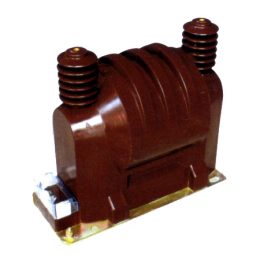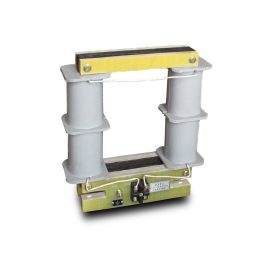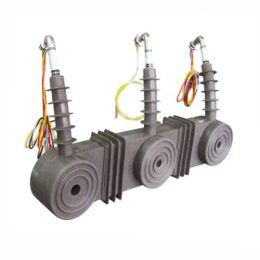A Discussion on the Saturation Point of Current Transformers: Transformer Protection and Current Protection
Understanding the working characteristics of current transformers (CTs) is essential to ensure the accurate operation of protection systems, especially when external faults lead to high currents that may cause CT saturation. Saturation can affect the protection mechanism, potentially compromising the system’s safety and reliability. Several testing methods are available to assess whether a CT will saturate under such conditions and if the protection system will still operate correctly.
Identifying the Saturation Point of Current Transformers
One of the most direct methods for detecting CT saturation is to load the secondary side with an actual load and pass current through the primary side, observing the secondary current to identify the saturation point. However, for protection-grade CTs, where the saturation point can exceed 10-20 times the rated current, performing this test in the field can be challenging.
Another method to determine the saturation point of a CT is through voltage-current (V-I) characteristic testing. As mentioned, CT saturation occurs when the magnetic flux density in the core exceeds a certain threshold. This saturation point can be reflected in the induced electromotive force (EMF) of the CT. By plotting the V-I characteristic curve and identifying the saturation voltage, the corresponding saturation current can be calculated. The V-I test involves applying current to the secondary side of the CT while keeping the primary side open and measuring the voltage drop across the secondary winding. Because there is no demagnetizing effect from the primary current, the core is more likely to saturate under relatively small currents. This method is easier to implement in the field as it does not require large current values.
Under normal operation, the core magnetic flux of a CT remains unsaturated. In this state, the load impedance and magnetizing current are relatively low, and the magnetizing impedance is high, ensuring that the magnetic potential in both the primary and secondary windings is balanced. However, when the magnetic flux density in the core increases and approaches saturation, the magnetizing impedance (Zm) rapidly decreases, breaking the linear relationship between the magnetizing current and the induced current. Saturation typically results from either excessive current or high load, which increases the secondary voltage and subsequently the core’s magnetic flux density.
Characteristics of Saturated Current Transformers
When a CT saturates, the following effects occur:
- The secondary current decreases significantly.
- The current waveform becomes heavily distorted, exhibiting higher-order harmonic components.
- The internal resistance of the CT reduces, approaching zero.
- In the event of a fault, if the current waveform crosses zero, the CT may still pass the current linearly.
- The saturation process typically lags by approximately 5 seconds after the fault occurs.
Additionally, the secondary circuit of a CT should never be left open during operation. If the secondary side is open, the primary current is converted into magnetizing current, leading to a rapid increase in magnetic flux density, which causes the CT to saturate quickly. Saturation leads to the generation of high voltage that can damage both primary and secondary insulation, posing a significant safety risk.
Transformer Protection Impact and Countermeasures
Transformers generally have small capacity and high reliability and are commonly installed on 10kV or 35kV buses. The short-circuit current on the high-voltage side of a transformer is often similar to the system’s short-circuit current, whereas the low-voltage side experiences a relatively larger short-circuit current. Insufficient protection for transformers can severely impact the safe operation of the transformer and the entire system.
Traditional transformer protection uses fuse-based devices, which offer reliable protection but are increasingly insufficient as system automation and short-circuit capacity grow. For newly built or upgraded substations, transformer switchgear and protection devices are often configured similarly to the 10kV line protection, but the saturation issue of the current transformer is frequently overlooked.
Due to the small capacity and relatively low primary current of transformers, shared CTs are often used. To ensure accurate metering, the CT ratio is reduced. However, when a fault occurs in the transformer, the CT may saturate, reducing the secondary current and preventing proper protection action. If a fault occurs on the high-voltage side, backup protection may clear the fault. However, if the fault is on the low-voltage side, the generated short-circuit current may not reach the required value to trigger backup protection, potentially causing the transformer to burn out and severely impacting system safety.
To prevent protection failures, transformers must be properly configured, ensuring the CTs chosen are suitable for both fault detection and metering. Measurement CTs should be installed on the low-voltage side of the transformer to ensure metering accuracy, while protection CTs are typically placed on the high-voltage side to ensure reliable protection operation.
Current Protection Impact and Countermeasures
When a current transformer saturates, the secondary equivalent current decreases, leading to protection malfunctions. In cases where the line impedance is high or the distance from the power source is far, the short-circuit current at the line outlet can be smaller. However, as the system expands, the short-circuit current increases, possibly reaching hundreds of times the CT’s primary current, causing the CT to saturate. Additionally, short-circuit faults are transient in nature and contain many different frequency components, which accelerate the saturation process.
For instance, when a short-circuit fault occurs on a 10kV line, CT saturation can reduce the secondary current, causing protection devices to fail to operate. The isolation of busbars or the low-voltage side of the main transformer can extend the fault duration and increase the affected area, compromising supply reliability and potentially threatening equipment safety.
To mitigate these issues, efforts should focus on reducing the CT load impedance, avoiding shared CTs, and increasing the cable cross-sectional area and length. The CT ratio should not be too small, and considerations should be made for saturation issues caused by short-circuit faults.
Conclusion
When designing and operating current transformers, it’s essential to account for saturation effects, as they directly impact both transformer protection and current protection systems. By choosing appropriately sized CTs and taking preventive measures, the risk of saturation can be minimized, ensuring the proper functioning of protection mechanisms and the overall safety of the power system.
- Magnetic Saturation in 20kV Voltage Transformers and Its Adverse Effects
- Causes and Solutions for False Fault Alarms in Zero-Sequence Current Transformers
- Working Principle of Zero-Sequence Current Transformers
- Zero-Sequence Current Transformers vs. Standard Current Transformer
- Fault Handling Considerations for Current and Voltage Transformers
- Error Analysis and Maintenance of Current Transformers in Power Systems



